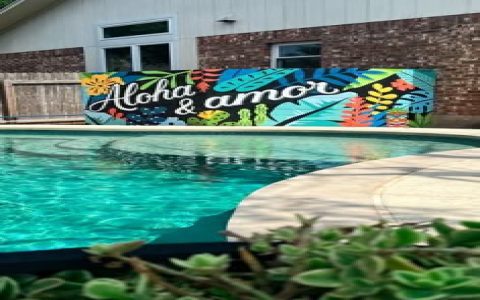Key Benefits of Pool Murals
Transforming pool surfaces into immersive experiences enhances aesthetic appeal and increases property value. Murals create visual depth, camouflage structural imperfections, and establish unique themes. They also reduce algae adhesion by providing smoother surfaces compared to traditional tiles.
Material Selection Criteria
- Epoxy Paints: Chemical-resistant, UV-stable formulations with anti-slip additives
- Glass Tile Mosaics: Frosted finishes for safety, vitreous glass for color retention
- Vinyl Wraps: PVC-free substrates with chlorine-resistant laminates
- Acrylic Cementitious Coatings: Trowel-applied systems incorporating colored aggregates
All materials must meet ASTM C920 elasticity standards and NSF/ANSI 50 certification for aquatic use.
Design Implementation Protocol
Execute murals during pool renovation following this sequence:

- Acid-etch substrate to 3.0 CSP profile
- Apply corrosion-inhibiting primer
- Plot design via laser grid projection
- Hand-paint using stencils or direct application
- Cure 72 hours before water exposure
Maintain 70-85°F ambient temperature during application. Complex designs require sequential quadrant execution.
Lifespan & Maintenance Requirements
Properly installed murals demonstrate:
- Epoxy systems: 12-15 year durability with annual pH balancing
- Tile mosaics: 20+ years with quarterly grout inspection
- Clean using nylon brushes and EDTA-based cleaners weekly
- Avoid abrasive tools and trichlor-based shock treatments
Conduct dye penetration tests biannually to detect coating fatigue.







